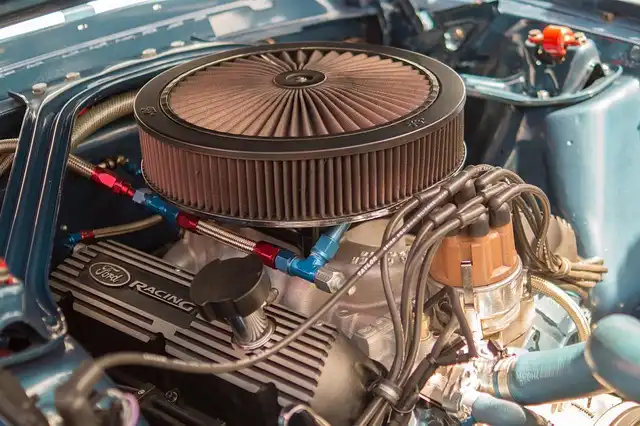Engine Whisperer: AI, Apps, and the Future of Car Diagnostics

Can AI diagnose engine problems with sound? Apps like 'Shazam for engines' promise quick fixes but face challenges in noisy environments. AI diagnostics evolve from industrial use to potential car features.
In a viral Facebook Reel, a young mechanic shots to identify a sputtering engine not by standing out the hood, yet by letting an app pay attention to it, like a medical professional with a stethoscope and a Spotify subscription.
The ‘Shazam for Engines’ Dream
Whether or not Devin’s video clip was honest, he took advantage of a wider wishing: The dream that every mechanical trouble might be resolved with a tap, a check, or an app. The concept of “Shazam for engines” both mocks and glamorizes our expect magical, rapid diagnosis. It likewise captures a cultural stress: old-school craft vs. mathematical faster ways.
To an expert technology with years of engine paying attention experience, detecting by audio is as much an art as it is a scientific research. The pros integrate what they listen to with what they really feel (vibration), what they see (leaks, wear, residue), what they smell (fuel, oil), and what they understand about part habits under lots. An acoustic-only reading is a fraction of that tale.
On Earth, Bosch is also establishing AI-powered audio analytics platforms for industrial wellness tracking, consisting of in heavy and vehicle equipment settings. Their work demonstrates that, under regulated conditions, a microphone selection integrated with machine learning can distinguish amongst functional modes and determine uneven actions.
Acoustic Diagnostics in Industry
Furthermore, many usual issues create comparable sounds, including rod knock, lifter tick, belt rattle, and chain slap, making it challenging to differentiate them based entirely on sound. The physical state of the engine– including oil volume, temperature, RPM, air intake, and backpressure– drastically shapes the acoustic finger print. Asking an application to determine flaw setting alone resembles asking voice recognition software to recognize a solitary tool in a band without context.
The idea of identifying makers by sound is much from brand-new in commercial setups. Scientists have actually long checked out acoustic anomaly discovery, where equipments are kept track of for audio signatures that differ their small habits. Among the extra public instances is Bosch’s SoundSee task, which utilizes artificial intelligence algorithms to analyze sound patterns and spot anomalies. Originally created for monitoring equipment aboard spacecraft, SoundSee has actually been tested on the International Space Station to pay attention for indications of impending failings in electric motors and pumps.
Challenges of Real-World Application
Bring that capacity into a chaotic garage atmosphere with engine covers off, ambient store sound, varying microphone high quality, and numerous overlapping sound sources is a huge leap. To a veteran tech with years of engine listening experience, identifying by audio is as much an art as it is a science. The physical state of the engine– including oil quantity, temp, RPM, air intake, and backpressure– considerably forms the acoustic fingerprint. Whether or not Devin’s video was sincere, he touched right into a broader hoping: The dream that every mechanical issue can be resolved with a faucet, a check, or an app. The first mobile app that can accurately distinguish between knock, rod knock, ignition, timing‐chain put, or bearing rattle under real-world problems would immediately draw in interest and capital.
Paradoxically, some mainstream auto brands have already incorporated rudimentary acoustic or vibration-based diagnostics, although nothing as consumer-facing as a phone application that informs you “pole knock” or “valve tap.”
However, bring that capability right into a disorderly garage atmosphere with engine covers off, ambient shop noise, varying microphone quality, and numerous overlapping sound sources is a large jump. Microphone level of sensitivity, positioning, interference from exhaust, rolling resonances, and acoustic representations all complicate the capture of a clean signal. Also the most capable AI designs call for well-labeled datasets to pick up from, which demands a great deal of known-fault sound examples and careful annotation.
Future of Automotive AI Diagnostics
A couple of years from currently, it’s entirely probable your following cars and truck’s ECU could videotape a subtle resonance or noise change, compare it with a learned standard, flag it, and suggest a specific repair. That’s basically what industrial systems currently do. It’s just an issue of reducing, refining, and adapting to complex atmospheres.
The cumulative reaction highlights exactly how far the idea diverges from years of hands-on training and analysis intuition. However, in spite of the jokes, the principle isn’t completely crazy, as speculative and industrial applications of acoustic diagnostics currently exist, several of which are even in space.
The jokingly clip from vehicle creator Devin Bendon (username Bendin with Bendon) acknowledges that it’s silly for any person to assume pointing a smartphone at an auto is all it requires to detect an issue. It does make you wonder, “What if?”
The Road Ahead: AI-Powered Car Repair?
One commenter said, “That’s shutoff tick bro– if you can not listen to that by ear you are no mechanic.” Another warned, “They should not hold a license if mechanics begin using automotive sound applications.” Still others, even more pragmatically, said that a phone can never ever identify a misfire, a failed injector, or a cylinder leaving.
Advancement frequently begins where individuals joke. The initial mobile app that can accurately distinguish between knock, rod knock, ignition, timing‐chain slap, or bearing rattle under real-world problems would right away stand out and resources. And the engineering foundations are currently being laid: audio AI, anomaly discovery, virtual noticing, sensor combination.
Still, none of these systems offers a “microphone to engine, get diagnosis” individual experience. They run behind the scenes via embedded sensors and control reasoning, not the kind of open-ended listening your average phone mic can do.
1 acoustic analysis2 AI diagnostics
3 automotive apps
4 car repair
5 engine sounds
6 machine learning
« Tesla Autosteer Removal: Impact on New Car Sales & FSDToyota Tacoma: Parasitic Draw Mystery Solved! »
